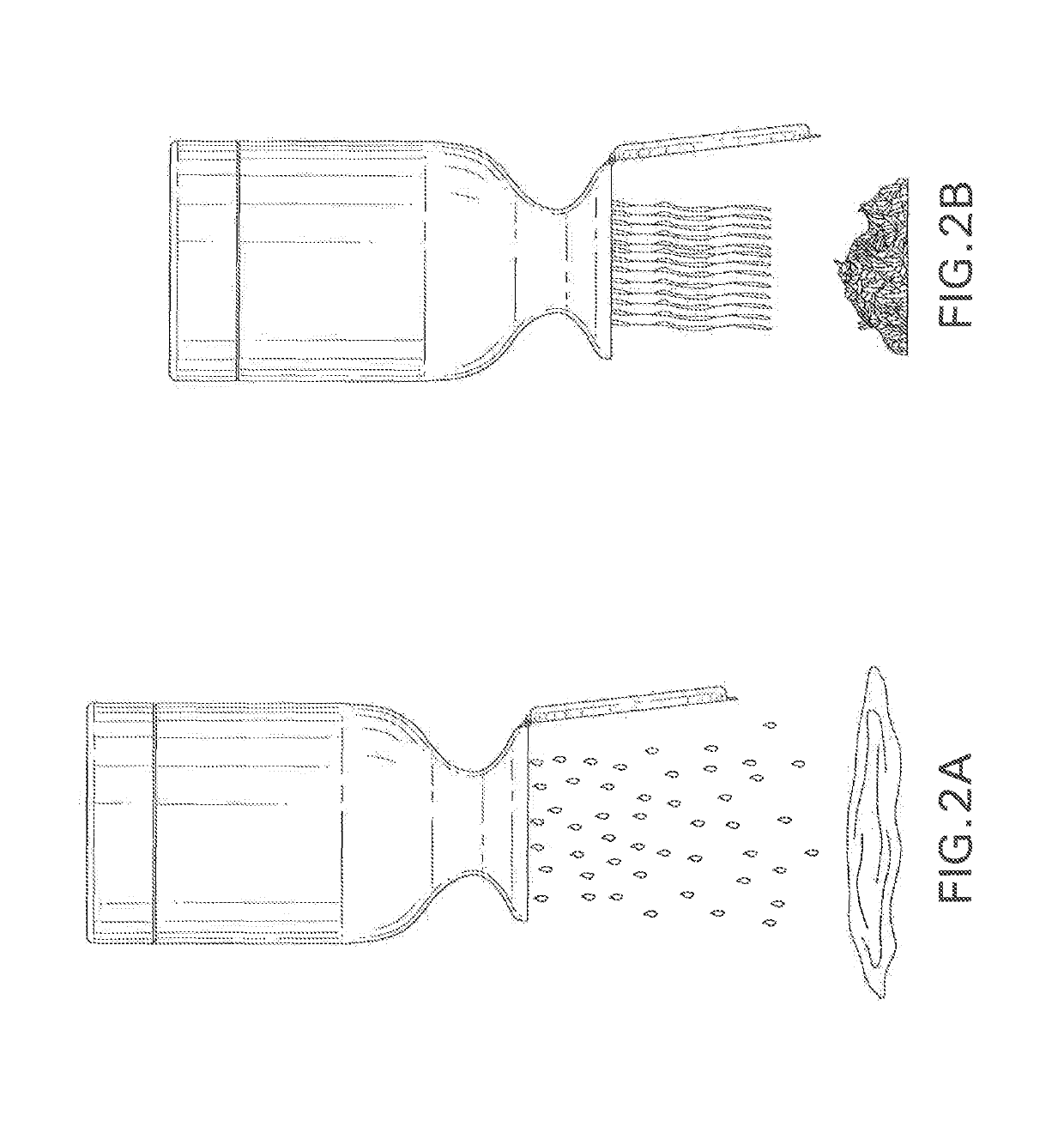Flowable food composition with water-holding and lubricating agents
a technology of lubricating agent and food composition, which is applied in the field of manufacturing of flowable food composition, can solve the problems of lack of convenience and waste, undesirable mouthfeel characteristics, and slimy feeling, and achieve the effect of desirable mouthfeel and textur
- Summary
- Abstract
- Description
- Claims
- Application Information
AI Technical Summary
Benefits of technology
Problems solved by technology
Method used
Image
Examples
example 1
Sauerkraut
[0048]Many consumers enjoy condiment foods such as sauerkraut on their bratwursts, hamburgers, hotdogs, sausages, etc. Unlike sauerkraut currently sold in cans, glass jars or plastic poly bags where any unused sauerkraut is either wasted or emptied into another storage container for later consumption, a sauerkraut product made in accordance with the present invention can be used just like a current ketchup or mustard condiment product. That is, the consumer squeezes the desired amount of condiment onto their food, then doses the bottle and may use any remaining sauerkraut in the bottle at a later time without the need for another separate container. Having the option of a flowable sauerkraut product allows the consumer to avoid having to otherwise open a can, jar or plastic poly bag of product and use a utensil to get the sauerkraut from the package onto their food product or dispense it into a separate container for serving, as well as avoid wasting any unused portions of...
example 2
Pesto
[0057]A flowable pesto product according to the present invention was developed in lab testing utilizing sundried tomatoes, fresh basil leaves, olive oil, garlic, pine nuts, parmigiano reggiano cheese and a water-holding agent. The sundried tomatoes and fresh basil leaves were chopped to a puree consistency. Olive oil, ground pine nuts and finely shredded parmigiano reggiano cheese were then added to the tomato and basil mixture and mixed well. Since the pureed pesto had little free liquid or water, it was unnecessary to screen or strain free liquid from the pesto. Likewise, since no pesto free liquid was screened or strained from the pesto, no free liquid as added back into the pesto. In lab testing, approximately 0.1% by weight (based on the total weight of the pesto solids) of a water-holding ingredient was used to evaluate flowability of the product from a squeezable package. Since the pesto already included olive oil (approximately 16% by weight of pesto solids), which act...
example 3
Pickles
[0058]In accordance with the present invention, a water-holding agent and a lubricating agent can also be added to chopped pickles to make a flowable pickle product. In lab testing, sliced dill pickle chips were chopped to a similar texture or slightly larger in size than that of pickle relish, which resulted in chopped pickle of approximately ¼″ in size. The chopped pickles included relatively little free liquid or water, such that the free liquid or water did not need to be screened or strained from the pickles and, likewise, did not need to be added back into the chopped pickles. A water-holding agent in the range of 0.1%-0.5% by weight (based on the total weight of the pickle solids), preferably approximately 0.08% by weight, and a lubricating agent in the range of 0.0%-0.2% by weight (based on the total weight of the pickle solids), preferably approximately 0.16% by weight, was then added and mixed to create a flowable pickle product. The flowable pickle product was foun...
PUM
 Login to View More
Login to View More Abstract
Description
Claims
Application Information
 Login to View More
Login to View More - R&D
- Intellectual Property
- Life Sciences
- Materials
- Tech Scout
- Unparalleled Data Quality
- Higher Quality Content
- 60% Fewer Hallucinations
Browse by: Latest US Patents, China's latest patents, Technical Efficacy Thesaurus, Application Domain, Technology Topic, Popular Technical Reports.
© 2025 PatSnap. All rights reserved.Legal|Privacy policy|Modern Slavery Act Transparency Statement|Sitemap|About US| Contact US: help@patsnap.com


